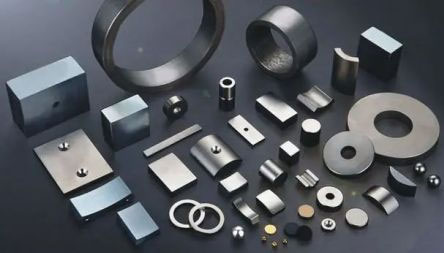Ames laboratory will cooperate with electronic energy company to improve the main body of magnet technology-samarium cobalt magnet.Since its development in the 1960s, SmCo magnets have always been the main force of modern technology, and their strength is second only to neodymium magnets. They are extremely resistant to demagnetization and can withstand high temperatures and corrosion.
The high magnetic power density and excellent temperature stability make SmCo magnets the first choice for many applications, including military, spacecraft, aerospace and marine applications.A disadvantage of SmCo magnets? They are very brittle. The process of pressing metal powders into solid blocks is called sintering, making them easy to chip and crack during the manufacturing process, and will fail in any environment with excessive vibration or mechanical shock.
Cui Baozhi, a scientist at the Critical Materials Institute (CMI), said: "The structural fragility of these magnets creates a lot of waste in the manufacturing process and limits their application in many technologies, otherwise they would be a good choice." The team researching ways to make rare earth permanent magnets stronger, more efficient, mechanically stronger and more cost-effective."In the magnet market, this is a real niche market with great opportunities." said Melania Jasinski, engineering director of Electronic Energy Corporation (EEC), a major domestic producer of SmCo magnets. "Therefore, the company is very interested in this. In terms of optimizing production. We look forward to a fruitful cooperation with Ames." CMI funded and developed the technology to produce stronger SmCo magnets. CMI is a public/private partnership that brings together experts from the US Department of Energy’s national laboratories, universities and industry partners (including EEC) to work together Innovative technical solutions, supply chain challenges.Ames Laboratories and the European Economic Community will work together to improve the magnet, and the laboratory will optimize the materials, and the manufacturer will adjust it to cost-effective industrial-scale production. It is expected to start work in December 2020.
In order to achieve these research and development goals, the laboratory received a $250,000 award in June 2020, which is part of the $33 million funding provided by the US Department of Energy's Technology Conversion Office (OTT) Technology Commercialization Fund (TCF). TCF promotes the commercialization of promising energy technologies and strengthens the cooperative relationship between the US Department of Energy National Laboratories and private companies to promote the technologies to the market. Participating companies provide matching funds. The Critical Materials Institute is a division of the Energy Innovation Center, led by the Ames Laboratory of the U.S. Department of Energy and supported by the Office of Advanced Manufacturing of the Office of Energy Efficiency and Renewable Energy, which supports early applied research to promote American manufacturing Industry innovation and promote the US economic growth and energy security. CMI seeks to eliminate and reduce reliance on rare earth metals and other materials affected by supply chain disruptions.
The Ames Laboratory is the National Laboratory of the Office of Science of the U.S. Department of Energy operated by Iowa State University. Ames Laboratories creates innovative materials, technology and energy solutions. We use our expertise, unique capabilities and interdisciplinary cooperation to solve global problems.
The Office of Science of the U.S. Department of Energy is the largest supporter of basic research in the physical sciences of the United States and is committed to solving the most pressing challenges of the current era.




